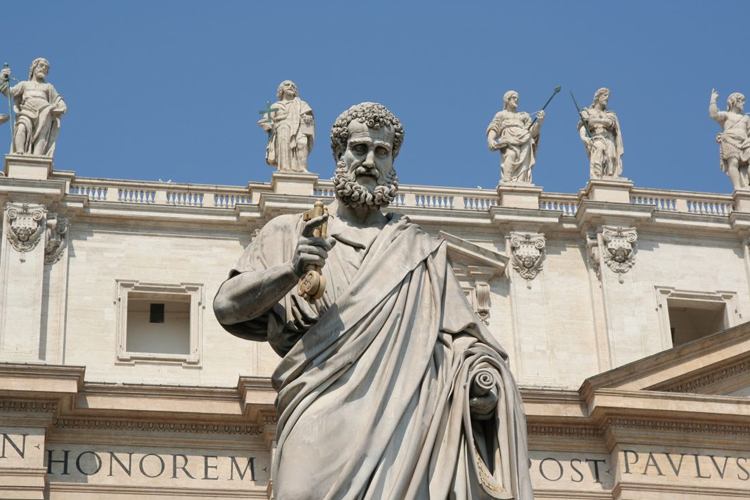
What is the Church?
The Church is the mystical body of Christ, established by God on earth to gather humanity to divine life in heaven.
God desires all the faithful to be a single family, united to him and to one another in one ‘mystical body’. This assembly is the Church, the body of Christ, which God has established as the “instrument for the salvation of all” (Lumen Gentium 9§2, ccc. 776).
The Church in the Creed
The Creed describes the Church as “One, Holy, Catholic and Apostolic.” She is One because she has one founder, God. She is also one because her members are united in one faith, sharing the same sacraments under one head, Christ, and the Pope, his vicar on earth. She is Holy because she is founded by God, and because her members are the baptised. Through her ministry sinners receive Christ’s forgiveness and become holy. She is Catholic, which means ‘universal’, because she is for all races and nations in all ages. All salvation comes through her. She is Apostolic because her faith and practices have come to her from the apostles. Her leaders, the bishops, are successors of the apostles. She is also apostolic in that she is ‘sent out’ to preach the Gospel to all creation.
The foundation of the Church by Christ
Jesus Christ established a group of followers under twelve leaders he called ‘Apostles’, the first bishops of his Church. He gave one of them, Simon Peter, overall authority.
“You are Peter, and on this rock I will build my church, and the powers of death shall not prevail against it. I will give you the keys of the kingdom of heaven, and whatever you bind on earth shall be bound in heaven, and whatever you loose on earth shall be loosed in heaven.” Matthew 16:18-19
Jesus gave his disciples his teaching to pass on to all peoples. This teaching, found in Scripture and Tradition, is interpreted by the Church with the authority of Christ.
Jesus also established the sacraments to supersede the rituals of the Old Law, enabling his saving power to be ministered through the Church: “Do this in remembrance of me”.
Mistakes about the Church include: an invisible ‘church’, which is the denial that Jesus founded any visible institution; a church without a Pope, which is the denial of the true hierarchical structure of the Church with bishops united to, and under the authority of, the Pope, the successor of Peter.
Where is the Church?
The Church on earth
St Paul calls the Church the ‘body of Christ’. As a body, she has an ordered structure and a visible unity. As Christ’s body, she also has a human and divine nature (ccc. 771).
The principal visible elements of this structure are the bishop of Rome (Pope), all the bishops of the world in communion with him, their priests and deacons, those in religious and consecrated life and the lay faithful.
Baptism is the means of entry into the Catholic Church, but not all the baptised are fully united with her. There are many Christians who are not Catholic, such as Protestant and Orthodox Christians. The Catholic Church believes that her essential structures and teachings are divinely established but recognises all that is good and true in other Christian communions. She is committed to the prayer and work for Christian unity which is called ecumenism.
The Church in purgatory
Since those who have died and are in purgatory are also part of the Church, the Church is also found in purgatory. This is why we in the Church on earth offer prayers and sacrifices for the purification and reparation of the souls of the dead.
The Church in heaven
The goal of the Church is to be united with God in the glory of heaven. The Apostles’ Creed calls the Church in glory ‘the communion of saints’. Although most saints are unknown to us, the Church has recognised that certain men and women, from all ages and states of life, are definitely saints in heaven. We in the Church on earth are joined in prayer with the saints in heaven. We therefore honour them and pray for their intercession in our earthly pilgrimage.
This article is originally from ‘CREDO: The Catholic Faith explained’ by CTS.
Video resources